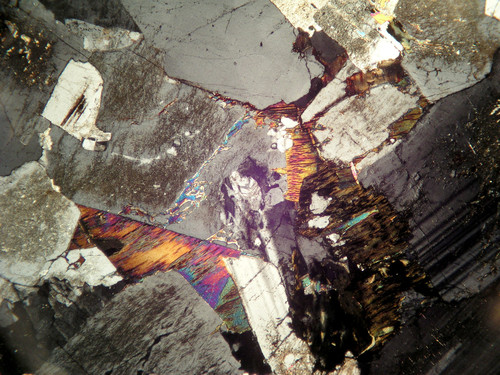BGS geoscience vocabularies provide consistency in our classification systems by controlling the spelling and terms used in our data holdings. They are available for browsing and as web services or downloads for use within your systems. We like to promote the use of these classification systems but ask users to read our IPR terms of use when reproducing BGS materials.
BGS vocabularies are lists of standardised terms covering a range of geoscience topics.
Standardised sets of terms — also known as ‘dictionaries’ or ‘controlled vocabularies’ — within datasets reduces the ambiguity associated with data markup and also enables records to be interpreted by computers. These dictionaries, or controlled vocabularies, control the terms we use in describing and supporting the description of scientific and other observations. This also opens up more possibilities for the datasets to be used in computer-aided manipulation, distribution and long-term reuse.
In certain areas, it is not always possible or agreeable for data providers to use the same terms. In such cases, controlled vocabularies can be used as a medium to which data centres can map their equivalent terms.
BGS has a number of geoscience vocabularies:
- Rock Classification Scheme
- Lexicon of Named Rock Units
- ages of geochronological intervals used to attribute feature:
- lithology
- lithostratigraphy
- names of mapped rock units
- names of maps
Our controlled vocabularies, or dictionaries, generally contain the following information for each term as a minimum:
- Code — a permanent identifier for the term, designed predominantly for computer storage rather than human readability.
- Translation — a short, concise text string representing the term in human-readable form where space is limited (suitable for drop-down lists in applications).
- Description — a full description of what is meant by the term.
Our vocabularies are version controlled and we keep a record of all changes.
- BGS vocabularies are required to have this information as the minimum for each term, but complex or specialised dictionaries, especially in the area of geoscience, may have extra attributes that help qualify the term.
- The preferred attribute name of the permanent identifier is ‘CODE’, but certain dictionaries may contain software-specific names. In all cases, the attribute that constitutes the permanent identifier is defined.
- The preferred attribute name for the full description is ‘DESCRIPTION’, but some dictionaries may contain software- or context-specific, descriptive fields.
Further information
Vocabularies web service
The vocabulary service has been implemented as a RESTful web service delivering lists of standardised terms covering a range of geoscience topics.

Browse and download vocabularies
We have over 370 vocabularies available for users to browse and download.
You may also be interested in

Technologies
Applications, software and online services created by the BGS and our collaborators.

BGS Lexicon of Named Rock Units
The BGS Lexicon of Named Rock Units provides our definitions of the geological units of the UK and its continental shelf.

The BGS Rock Classification Scheme
The BGS Rock Classification Scheme (RCS) is a corporate standard setting out a practical, logical and robust system for classifying and naming geological materials as they appear at the scale of a single exposure, hand specimen, or thin section.
Vocabularies web service
The vocabulary service has been implemented as a RESTful web service delivering lists of standardised terms covering a range of geoscience topics.

